
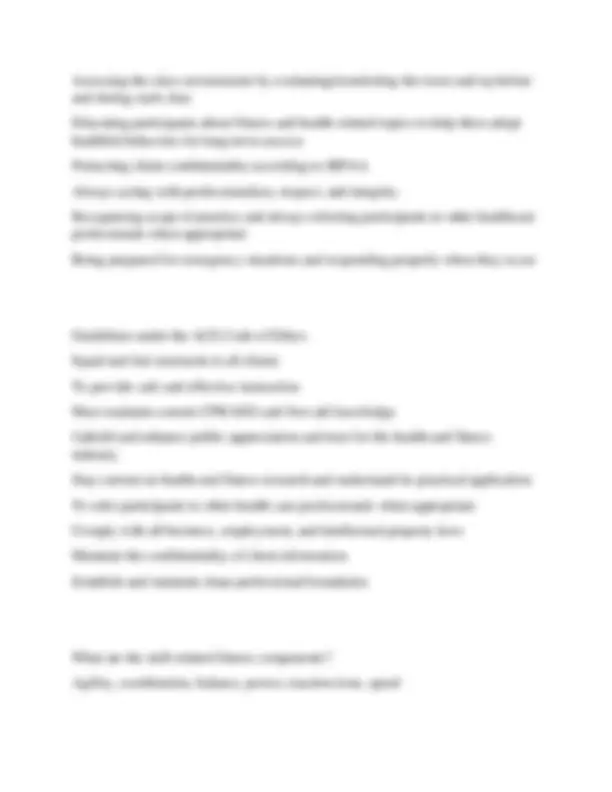
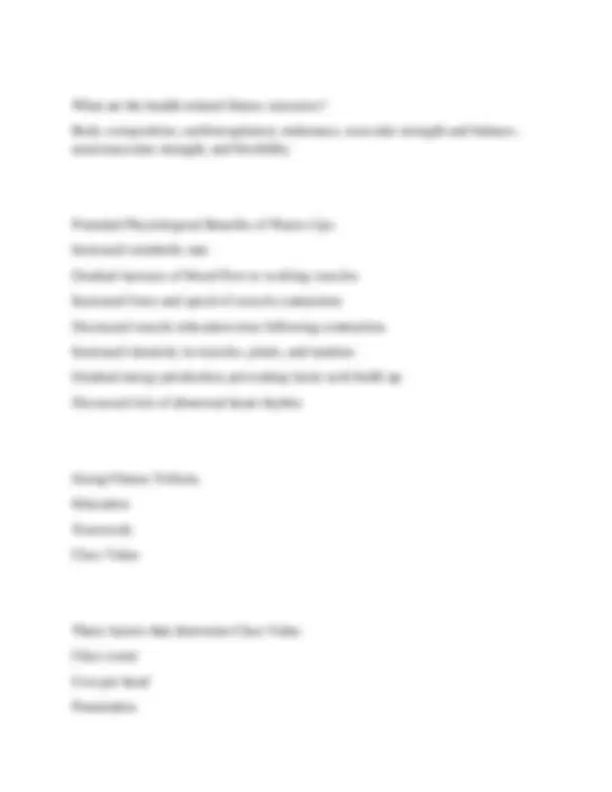
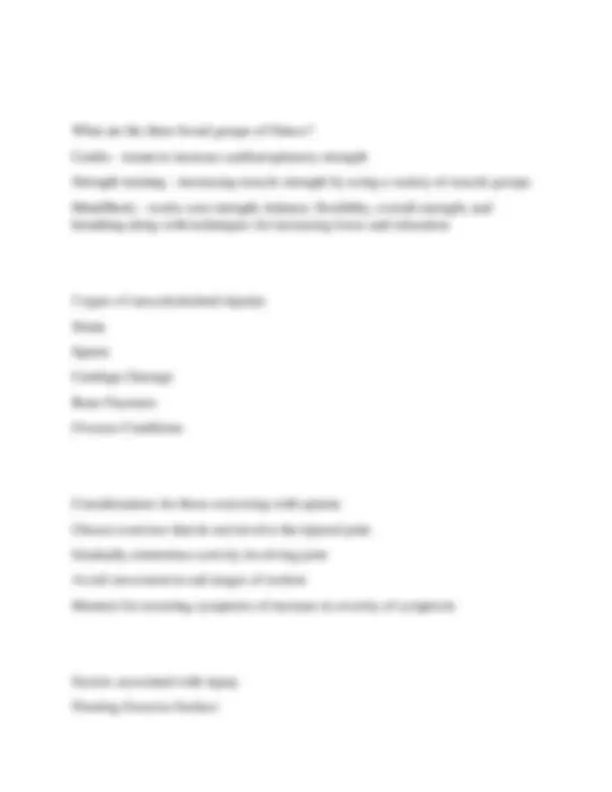
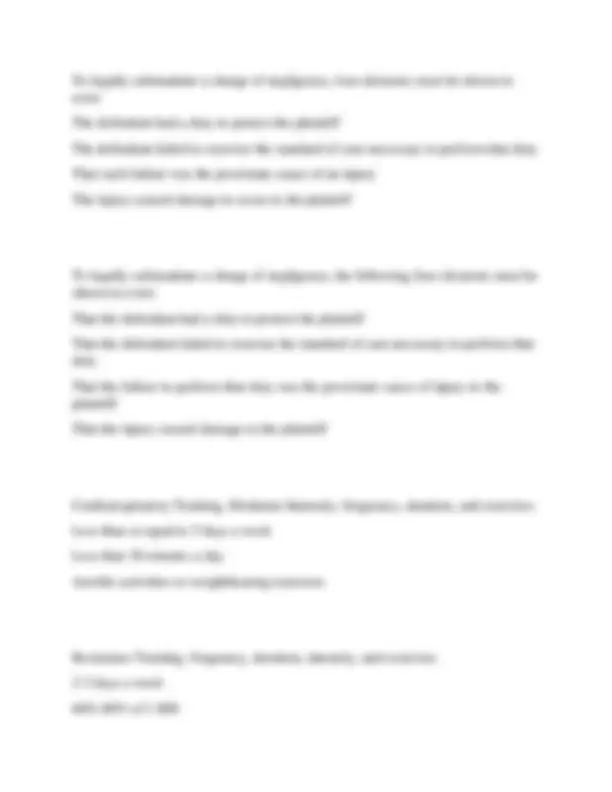
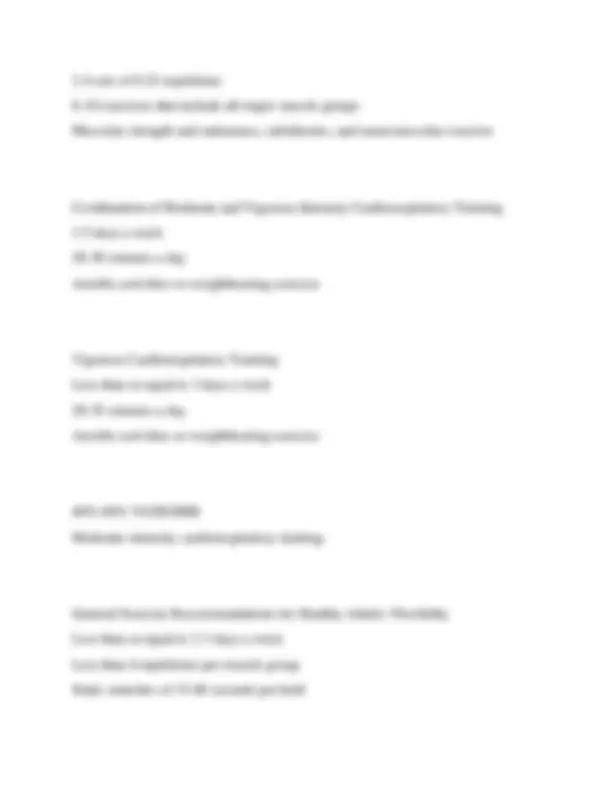
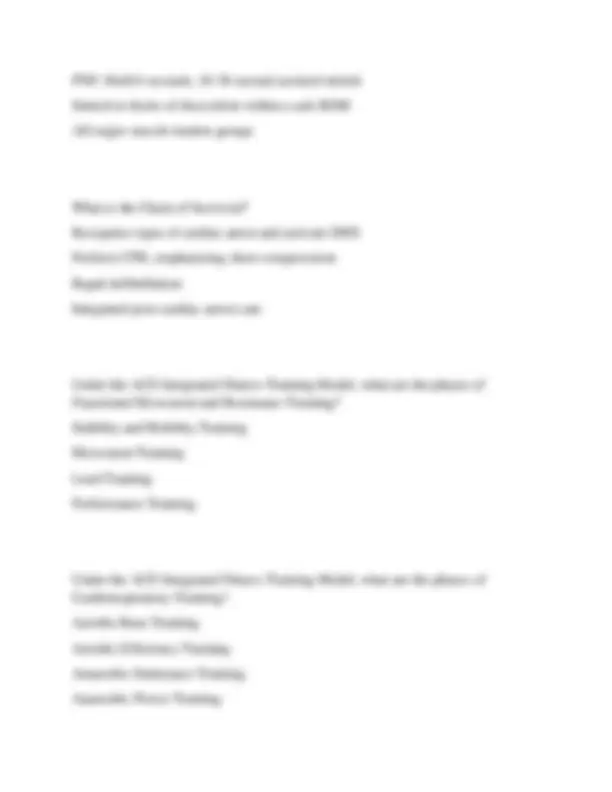
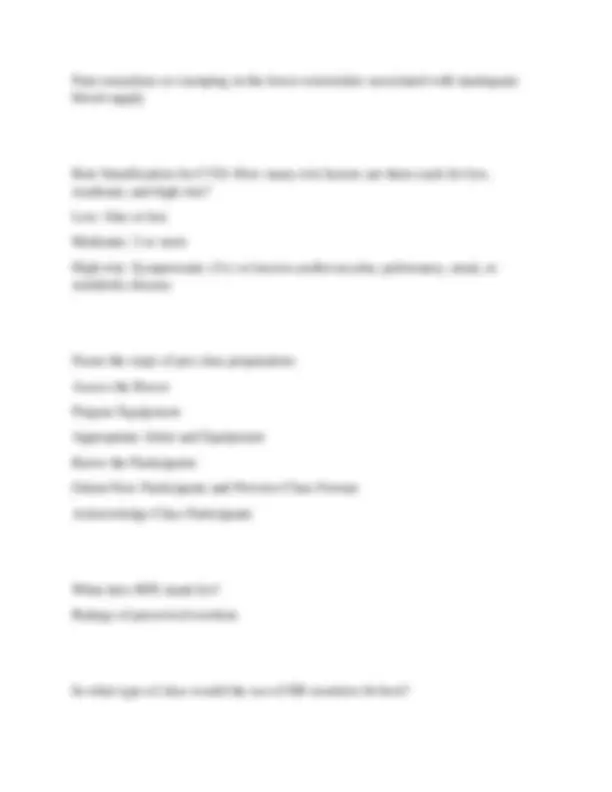

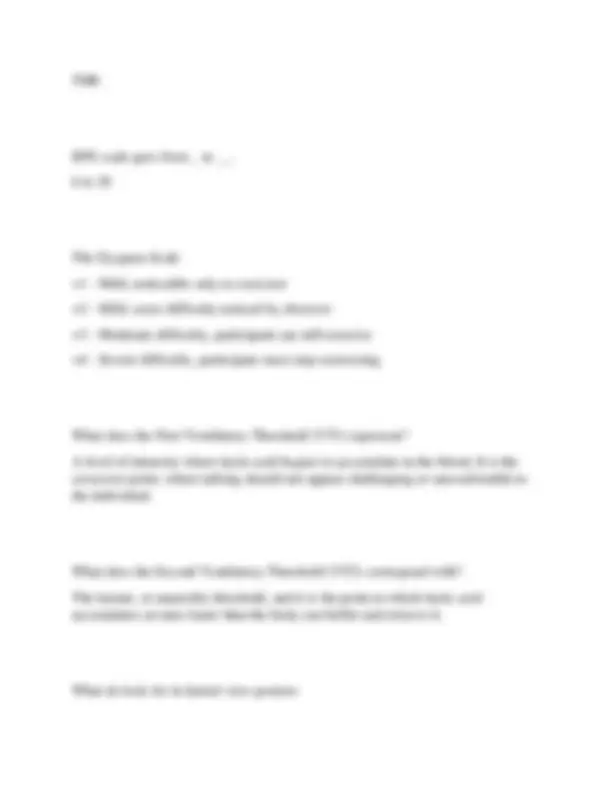
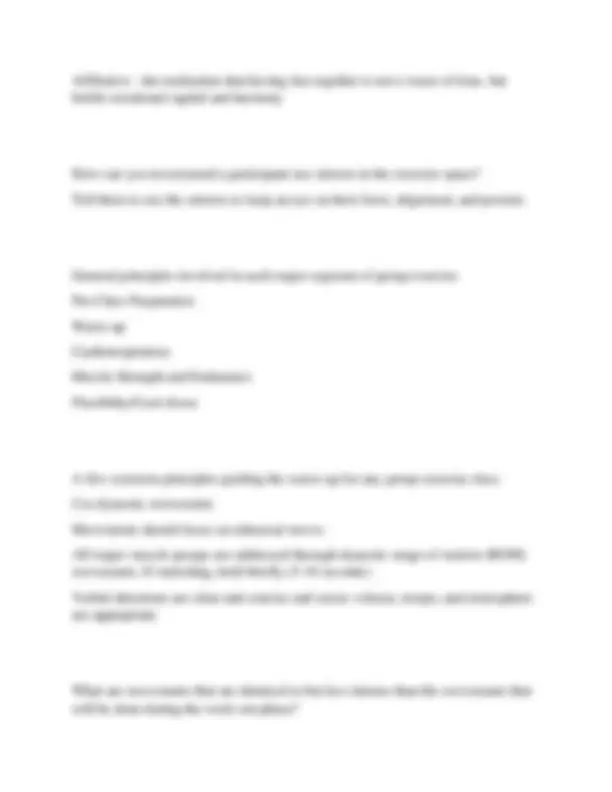

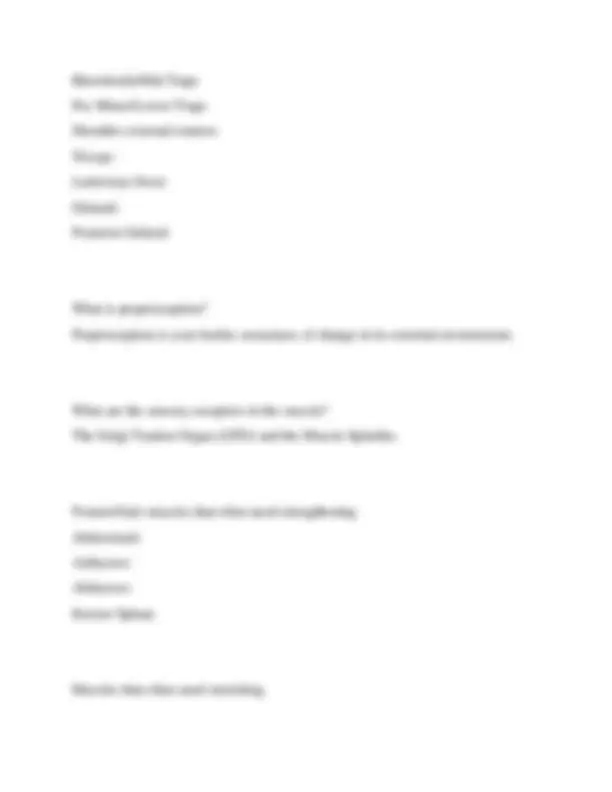

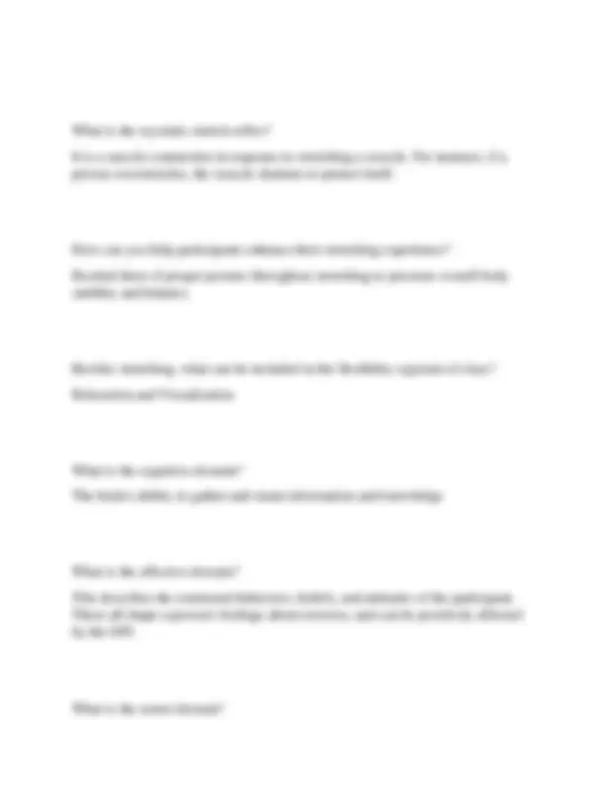
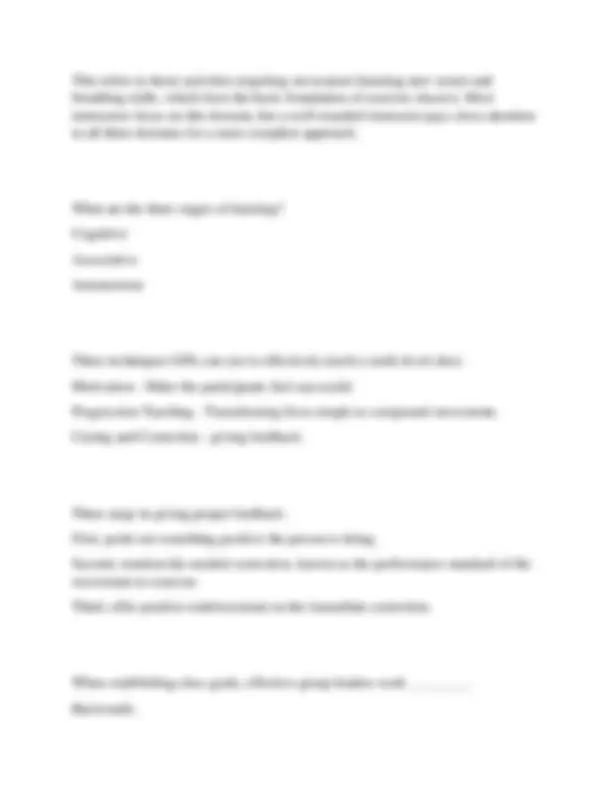
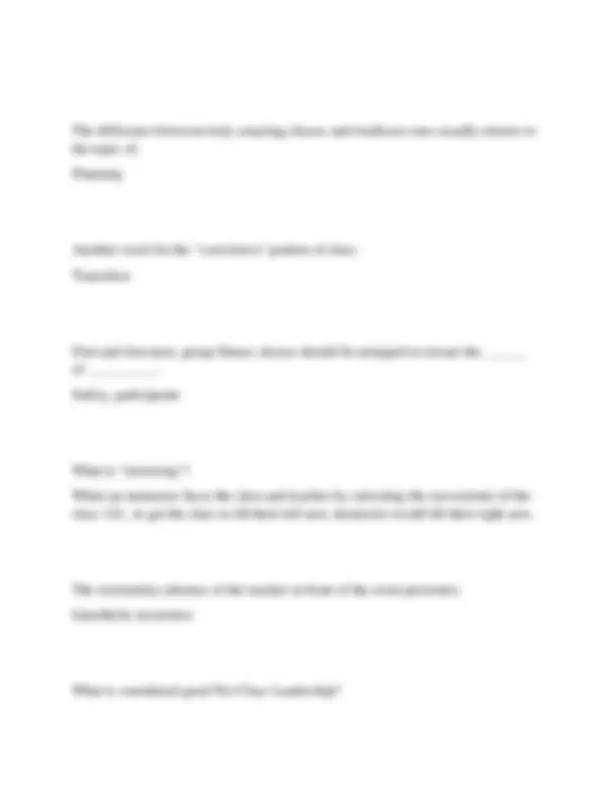
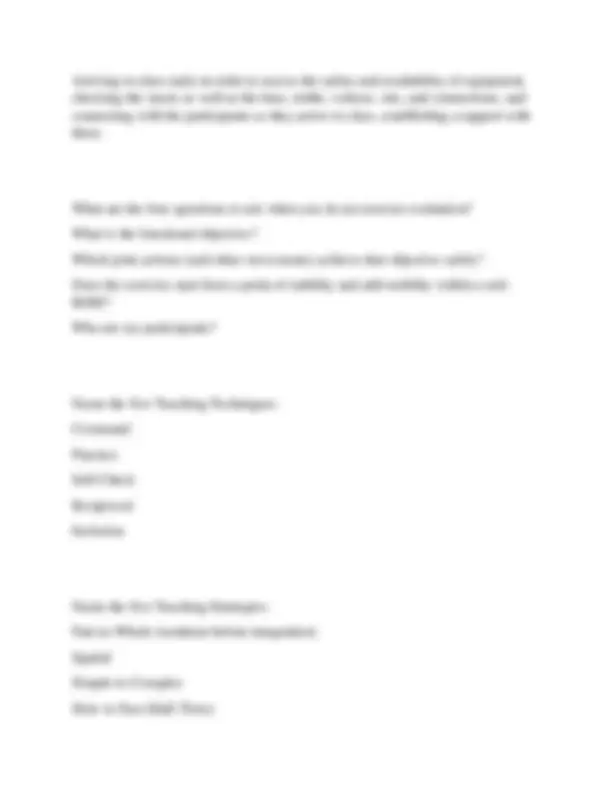
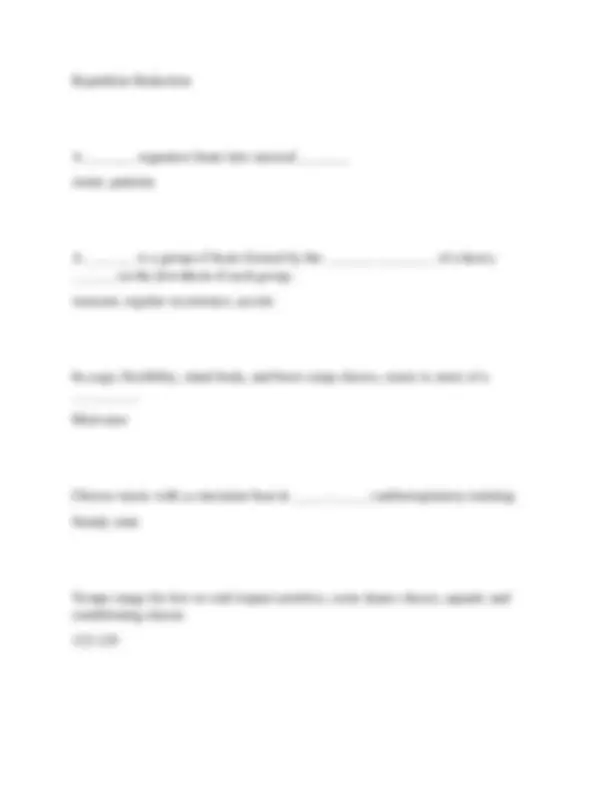
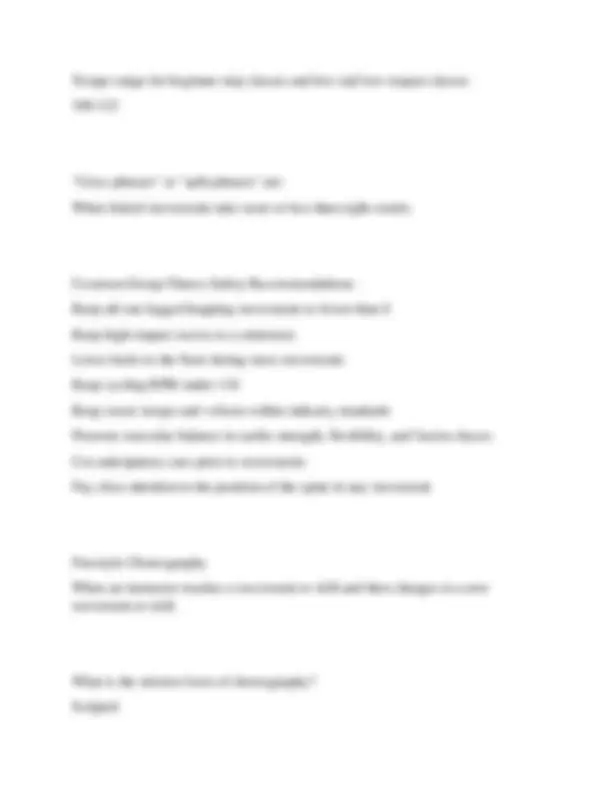
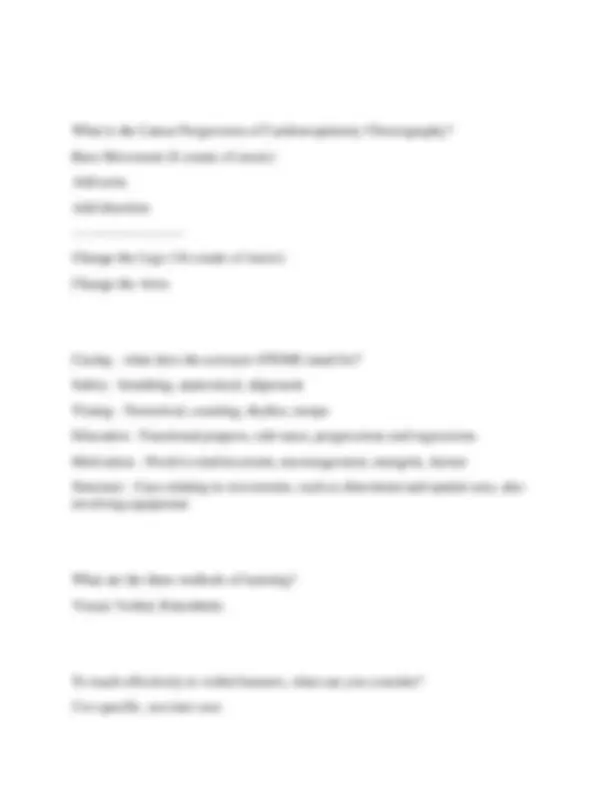
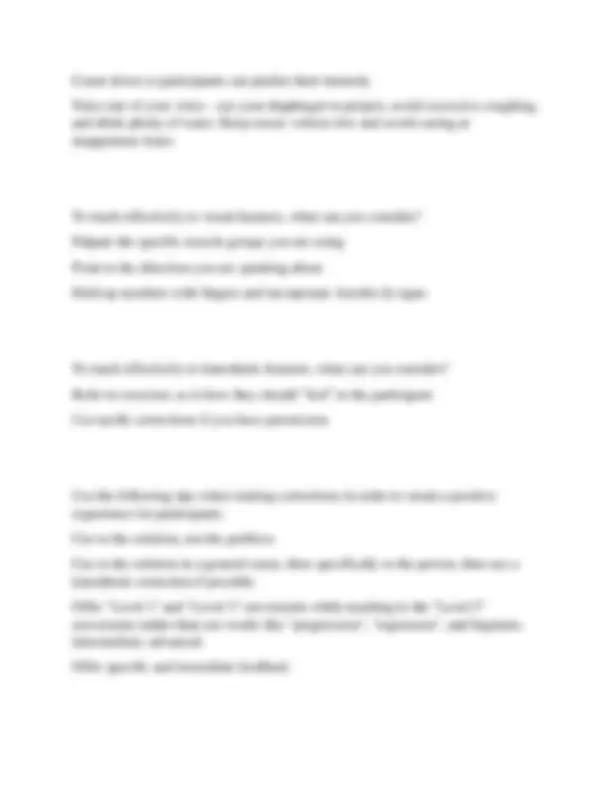
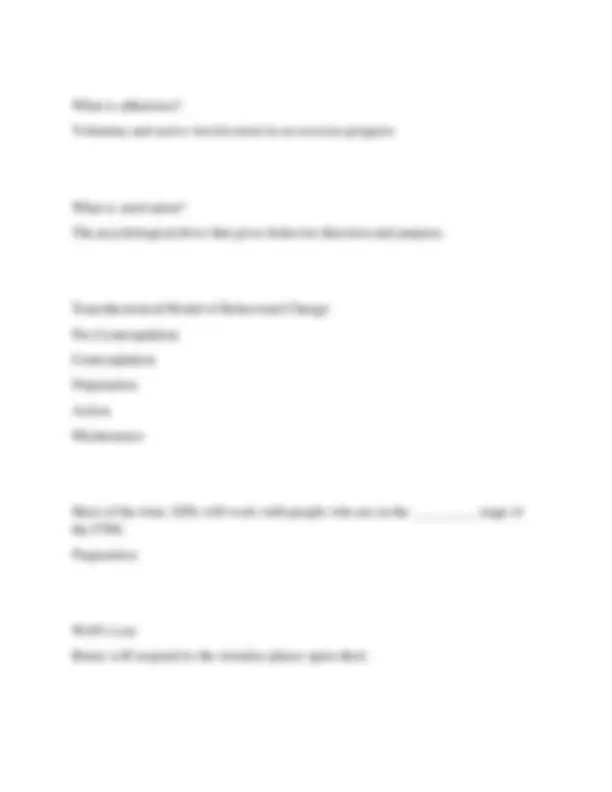
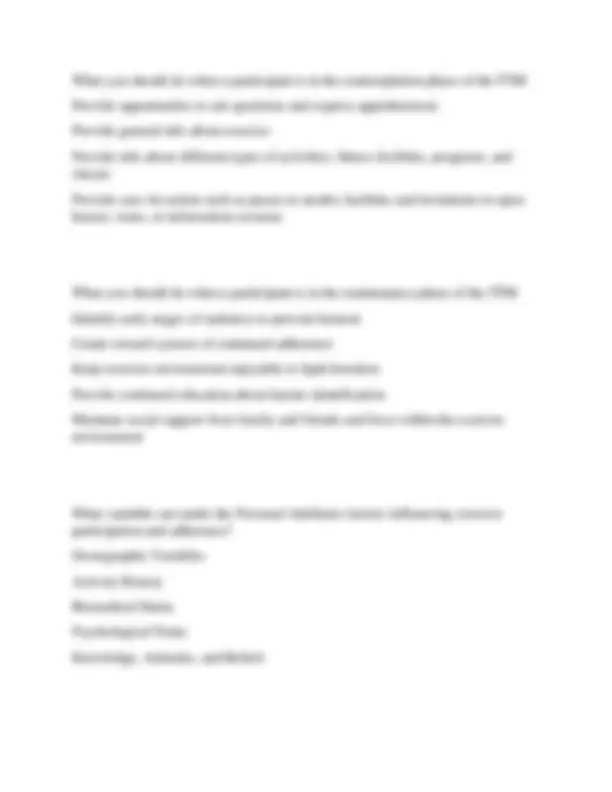
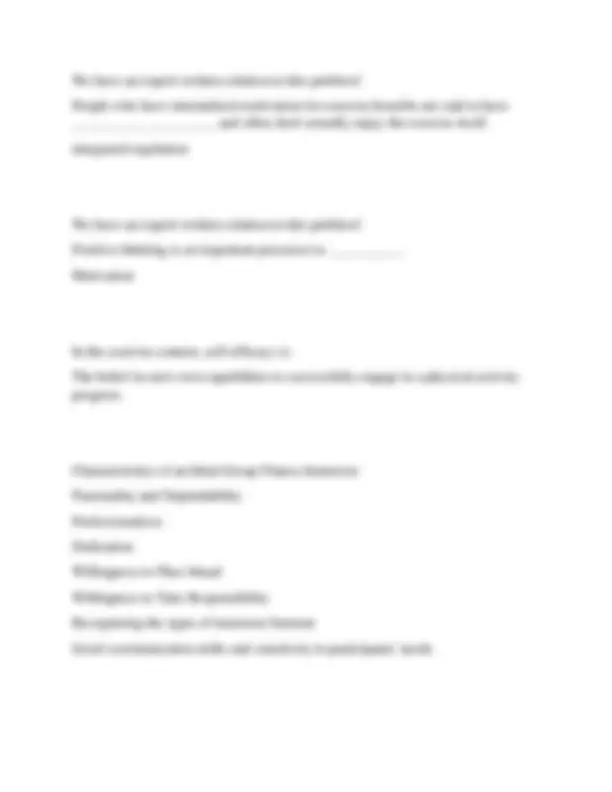
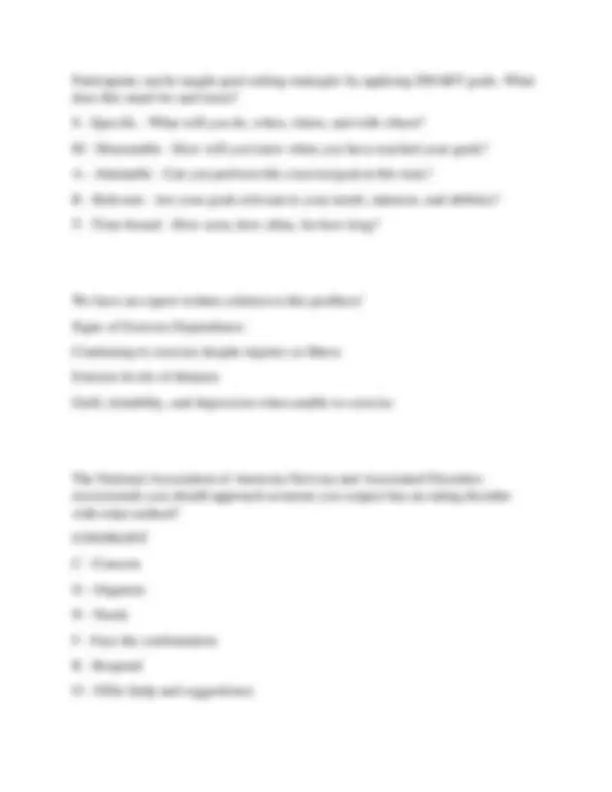
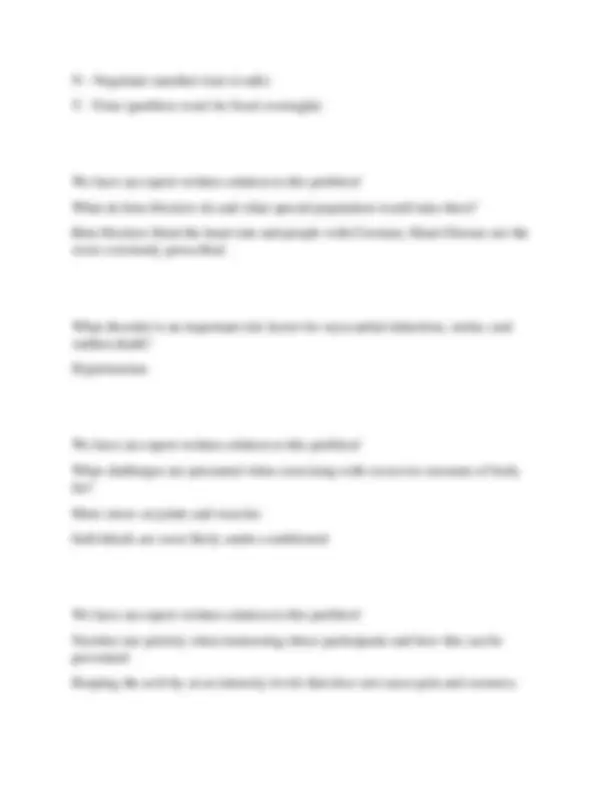
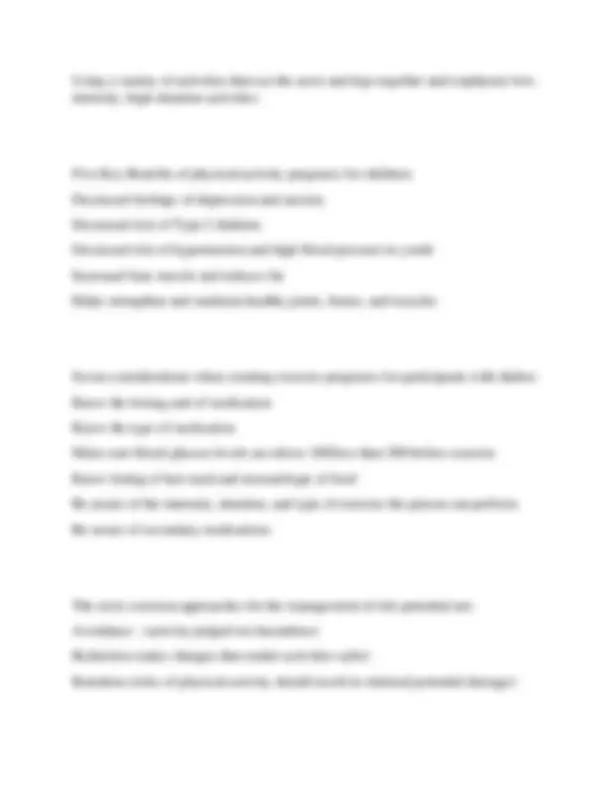
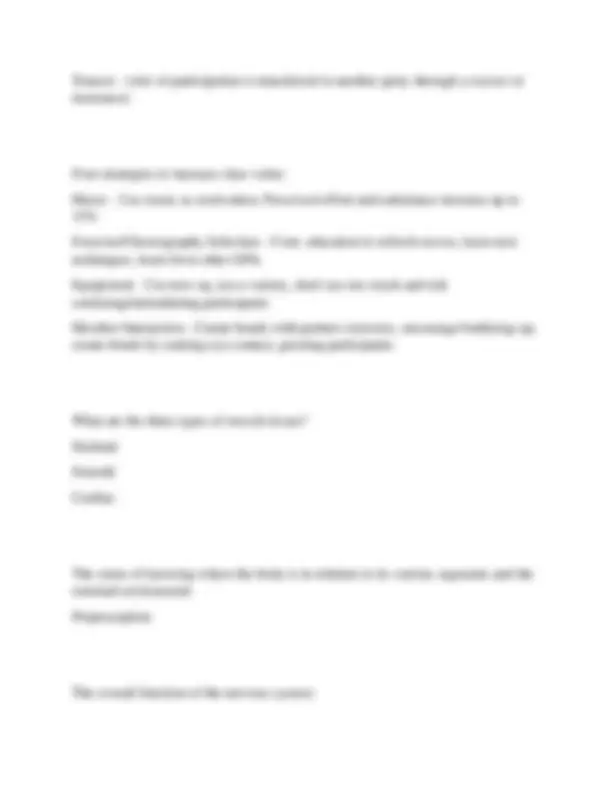
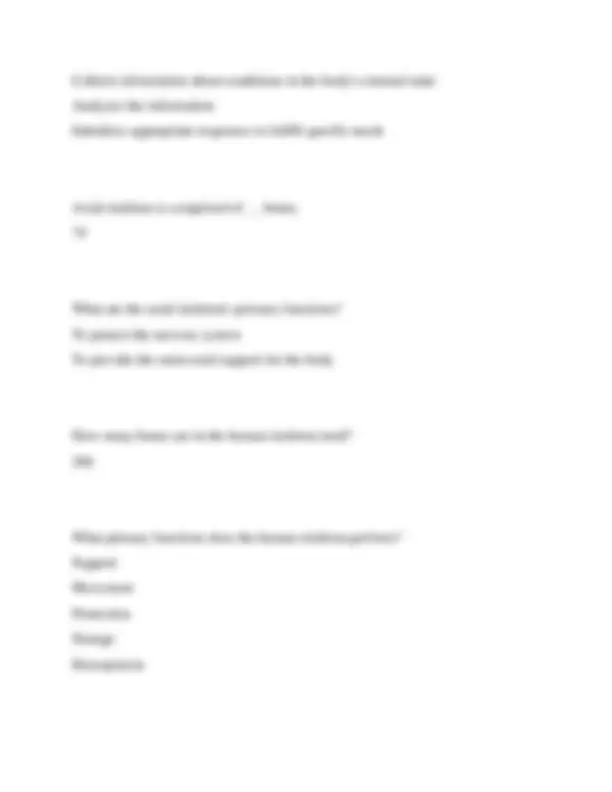
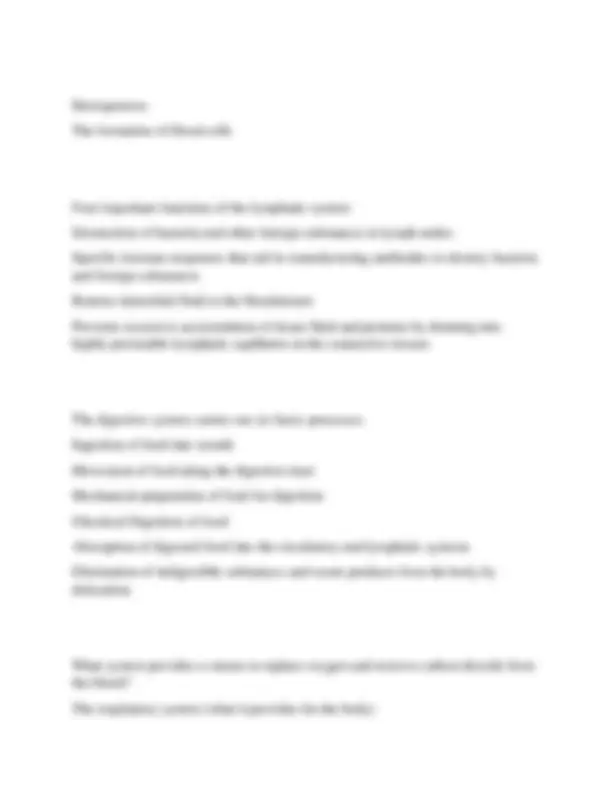
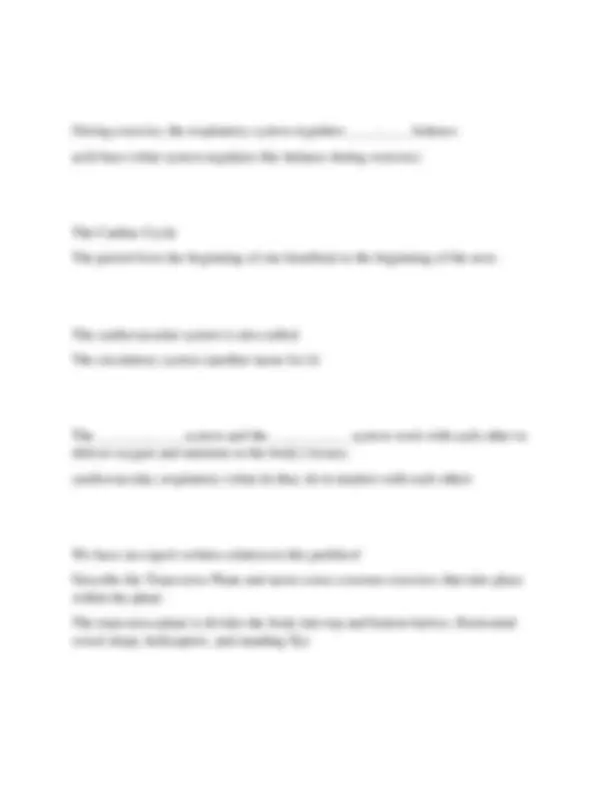
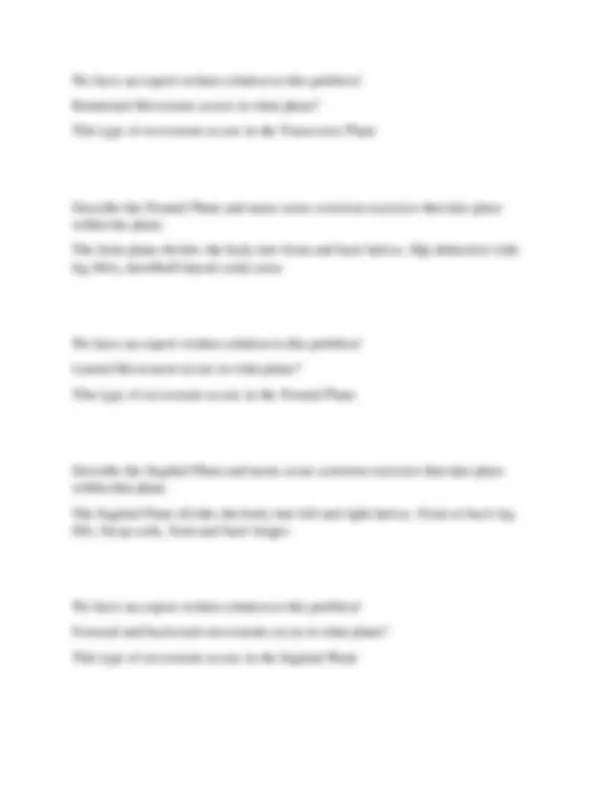
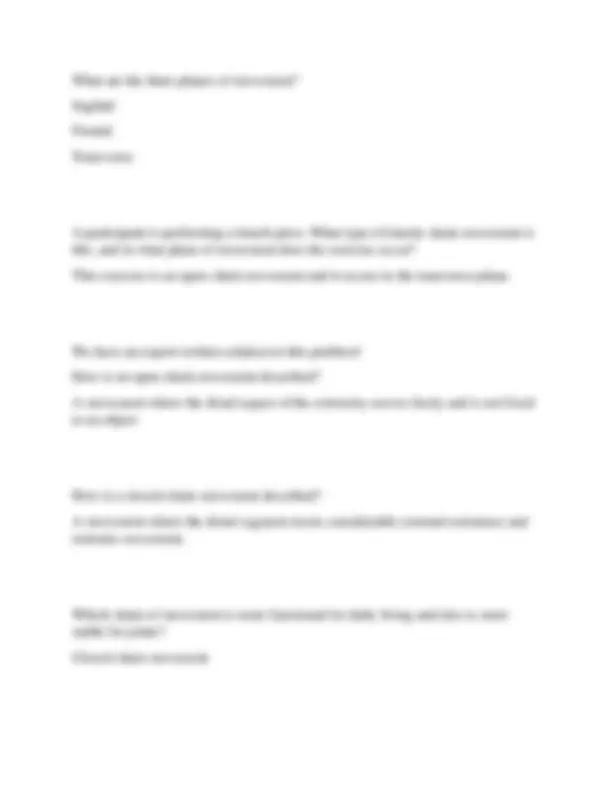
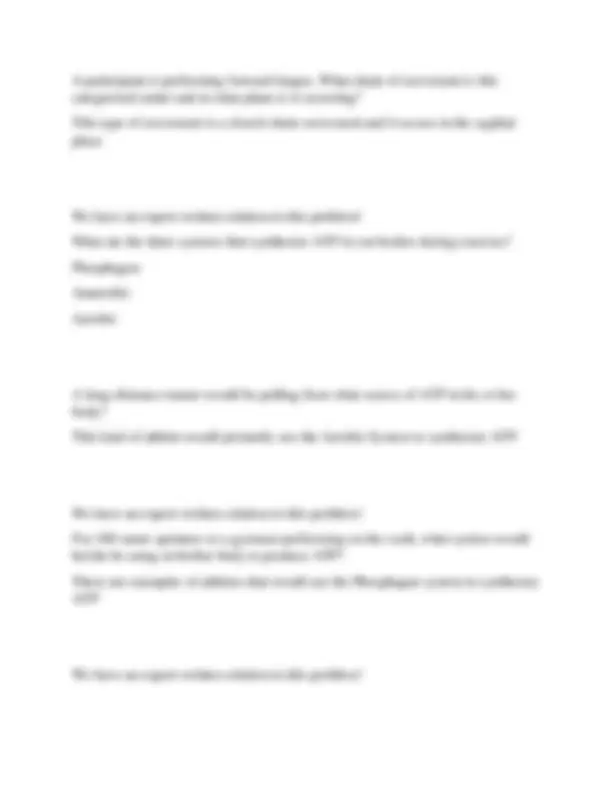
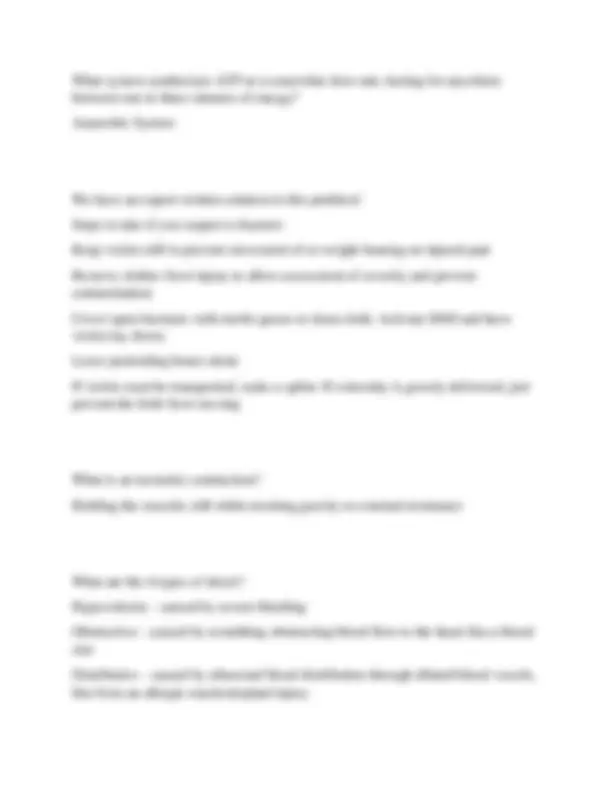
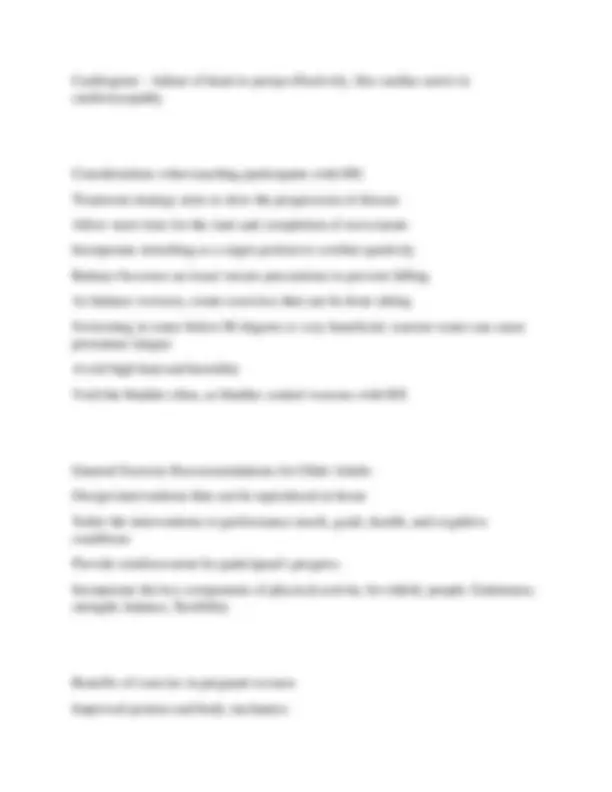
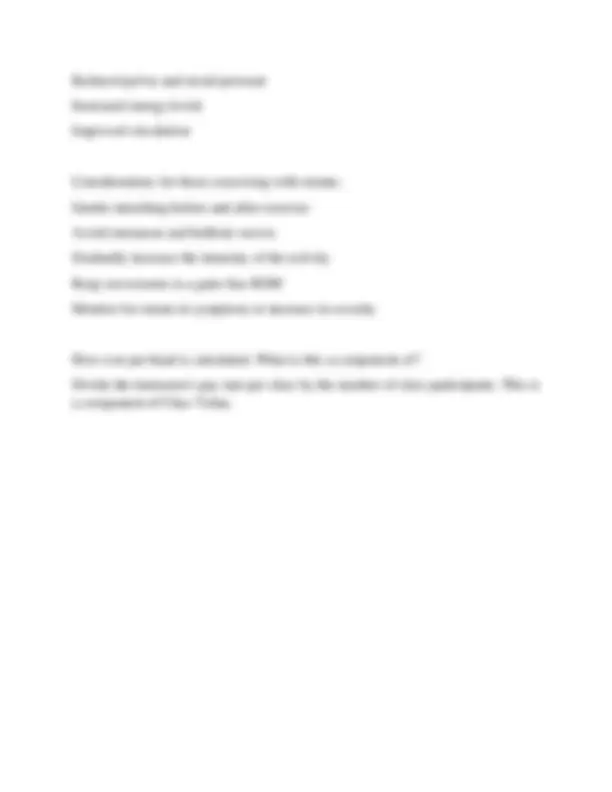


Study with the several resources on Docsity

Earn points by helping other students or get them with a premium plan


Prepare for your exams
Study with the several resources on Docsity

Earn points to download
Earn points by helping other students or get them with a premium plan
Community
Ask the community for help and clear up your study doubts
Discover the best universities in your country according to Docsity users
Free resources
Download our free guides on studying techniques, anxiety management strategies, and thesis advice from Docsity tutors
ACE Group Fitness Exam 2025-2026. QUESTIONS WITH CORRECT ANSWERS. A+ GRADED. What is the definition of a scope of practice? The legal range of services that professionals in a given field can provide, the settings in which they can be provided, and the guidelines or parameters that must be followed. What member of the Allied Healthcare Continuum can evaluate patients to diagnose ailments and implement treatment plans? Physicians/Doctors
Typology: Exams
1 / 45

This page cannot be seen from the preview
Don't miss anything!






































What is the definition of a scope of practice? The legal range of services that professionals in a given field can provide, the settings in which they can be provided, and the guidelines or parameters that must be followed.
What member of the Allied Healthcare Continuum can evaluate patients to diagnose ailments and implement treatment plans? Physicians/Doctors
We have an expert-written solution to this problem! Name some reasons why there is expected growth in Group Fitness jobs between 2008 and 2018. Concerns about childhood obesity. Growing number of schools eliminating P.E. from curriculum Baby Boomers wanting to stay healthy, physically fit, and independent A growing elderly population that seeks relief from arthritis and osteoporosis through individualized exercises, pilates, and yoga To replace the number of GF instructors that leave the industry every year Growing number of club memberships among young adults concerned about physicial fitness
What member of the Allied Healthcare Continuum can teach clients proper nutrition through recipes, meal plans, food preparation methods, and implementation of special diets? Registered Dieticians
What member of the Allied Healthcare Continuum can lead patients through therapeutic exercise and teach them to perform additional exercises to facilitate rehabilitation? Physical therapists/Occupational therapists
What member of the Allied Healthcare Continuum can teach athletes exercises to prevent injury and take them through therapeutic exercises following injury. Athletic Trainer
ACE-certified Group Fitness Instructor Scope of Practice Develop and implement exercise programs that are safe, effective, and appropriate Conducting pre-exercise health screenings and stratifying risk for CVD Administering appropriate fitness assessments based on health screening, current fitness, lifestyle factors, and goals Teach correct exercise methods and progressions through demonstration, explanation, and proper cueing and leadership techniques Instructing class participants how to monitor HR Empowering people to begin and adhere to their exercise programs using guidance, support, motivation, lapse-prevention strategies, and effective feedback
What are the health-related fitness measures? Body composition, cardiorespiratory endurance, muscular strength and balance, neuromuscular strength, and flexibility
Potential Physiological Benefits of Warm-Ups: Increased metabolic rate Gradual increase of blood flow to working muscles Increased force and speed of muscle contraction Decreased muscle relaxation time following contraction Increased elasticity in muscles, joints, and tendons Gradual energy production, preventing lactic acid build-up Decreased risk of abnormal heart rhythm
Group Fitness Trifecta Education Teamwork Class Value
Three factors that determine Class Value Class count Cost per head Penetration
What are the three broad groups of fitness? Cardio - meant to increase cardiorespiratory strength Strength training - increasing muscle strength by using a variety of muscle groups Mind/Body - works core strength, balance, flexibility, overall strength, and breathing along with techniques for increasing focus and relaxation
5 types of musculoskeletal injuries Strain Sprain Cartilage Damage Bone Fractures Overuse Conditions
Considerations for those exercising with sprains Choose exercises that do not involve the injured joint Gradually reintroduce activity involving joint Avoid movement in end ranges of motion Monitor for recurring symptoms of increase in severity of symptoms
Factors associated with injury Flooring Exercise Surface
Promote muscular balance in cardio strength, flexibility, and fusion classes Use anticipatory cues prior to movements
In the Cardiorespiratory Segment of a group exercise class, the GFI should: Increase intensity gradually Give options for impact and intensity Monitor intensity using heart rate and/or PRE Use music to create a motivational atmosphere Target a variety of muscle groups Promote independence/self-responsibility Include a post-cardio cooldown/stretch Build sequences logically and progressively
Areas of Responsibility (reducing liability) Health Screening Fitness Testing and Exercise Programming Instruction Supervision Facilities Equipment Risk Management
To legally substantiate a charge of negligence, four elements must be shown to exist: The defendant had a duty to protect the plaintiff The defendant failed to exercise the standard of care necessary to perform that duty That such failure was the proximate cause of an injury The injury caused damage to occur to the plaintiff
To legally substantiate a charge of negligence, the following four elements must be shown to exist: That the defendant had a duty to protect the plaintiff That the defendant failed to exercise the standard of care necessary to perform that duty That the failure to perform that duty was the proximate cause of injury to the plaintiff That the injury caused damage to the plaintiff
Cardiorespiratory Training, Moderate Intensity: frequency, duration, and exercises Less than or equal to 5 days a week Less than 30 minutes a day Aerobic activities or weightbearing exercises
Resistance Training, frequency, duration, intensity, and exercises 2-3 days a week 60%-80% of 1 RM
PNF: Hold 6 seconds, 10-30 second assisted stretch Stretch to limits of discomfort within a safe ROM All major muscle-tendon groups
What is the Chain of Survivial? Recognize signs of cardiac arrest and activate EMS Perform CPR, emphasizing chest compressions Rapid defibrillation Integrated post-cardiac arrest care
Under the ACE Integrated Fitness Training Model, what are the phases of Functional Movement and Resistance Training? Stability and Mobility Training Movement Training Load Training Performance Training
Under the ACE Integrated Fitness Training Model, what are the phases of Cardiorespiratory Training? Aerobic Base Training Aerobic Efficiency Training Anaerobic Endurance Training Anaerobic Power Training
We have an expert-written solution to this problem! What are the three determinants (categories) for physical activity: Environmental Factors Personal Attributes Physical-Activity Factors
What is considered the most important variable for program adherence? Activity History
Time and Access to Facilities is part of what determinant for physical activity? Environmental Factors
This type of motivation relies on external factors that are suggested by someone/something else. What feelings do they tend to experience in regards to their participation? Introjection Guilt, tension, pressure, being controlled
Self-efficacy The belief in ones capabilities to successfully engage in an exercise program
Pain sensations or cramping in the lower extremities associated with inadequate blood supply
Risk Stratification for CVD: How many risk factors are there each for low, moderate, and high risk? Low: One or less Moderate: 2 or more High risk: Symptomatic (3+) or known cardiovascular, pulmonary, renal, or metabolic disease
Name the steps of pre-class preparation: Assess the Room Prepare Equipment Appropriate Attire and Equipment Know the Participants Orient New Participants and Preview Class Format Acknowledge Class Participants
What does RPE stand for? Ratings of perceived exertion
In what type of class would the use of HR monitors be best?
Group cycling or running
How to figure out Maximum Heart Rate (MHR): 208 - (Age X .70)
Figure out the MHR of a 37 year old. 182 bpm
What is the target heart rate for a 20 year-old? 107-
What would be the target heart rate (55%-90%) of a 25 year old? Find the MHR first (208-(25X.70)) then multiple my .55 and .90. 104-
What is the standard deviation for MHR? Plus or minus 12 bears per minute (bpm)
Overweight or deconditioned people reach their ___ more quickly and with less effort.
Suspended head Ears over shoulders Shoulders over hips Hips over knees Knees over ankles Three natural curves of the spine Knees should be unlocked
What to look for in posture in Anterior and Posterior views Feet shoulder width-apart (watch pronation or supination) No shifting or leaning to one side (hips, shoulders)
What to look for in posture for the Anterior View Arms should hang with equal space between torso Thumbs and index finger only should be visible Knees pointing forward
Skinfold Caliper measurements - percentage chart for obesity: Women - Athletes - 14-20% Men - Athletes - 6-13% Women - Fitness - 21-24% Men - Fitness 14-17% Women - Average - 25-31% Men - Average 18-24%
BMI reference chart Normal Weight 18.5-24. Overweight 25-29. Grade I Obesity - 30-34.
What is an example of a cardiorespiratory endurance test once can administer in a group fitness atmosphere? YMCA submaximal step test
We have an expert-written solution to this problem! Give examples of student-centered instruction: Fostering Independence Encouragement Attainable goals Realism
Leadership Styles that can be applied to group exercise: Visionary: Inspires by sharing a heart-felt, shared goal Coaching: Taking people aside to learn their aspiration and gives feedback in the those terms and helps move towards those goals Democratic: Knowing when to listen and ask for input and draws on what others know to make better decisions
Rehearsal Moves
We have an expert-written solution to this problem! What is Fartlek training? It's a form of interval training where the exerciser to change the intensity based on how he or she is feeling.
What is Interval Training? It's a form of cardiorespiratory training where the exerciser alternates working at high and low intensities.
In the muscular strength and endurance segment, it is suggested that a GFI should: Promote muscular balance, functional fitness, and proper progressions Maintain and observe participants' form and offer modifications for those with injuries or disabilities Give visual, verbal, and physical corrections on participant's body mechanics and posture/alignment Use eq safely and effectively Create a motivational and instructional atmosphere
What are some muscles that often need strengthening? Anterior Tibialis Hamstrings
Rhomboids/Mid Traps Pec Minor/Lower Traps Shoulder external rotators Triceps Lattisimus Dorsi Gluteals Posterior Deltoid
What is proprioception? Proprioception is your bodies awareness of change in its external environment.
What are the sensory receptors in the muscle? The Golgi Tendon Organ (GTO) and the Muscle Spindles.
Posture/Gait muscles that often need strengthening Abdominals Adductors Abductors Erector Spinae
Muscles that often need stretching